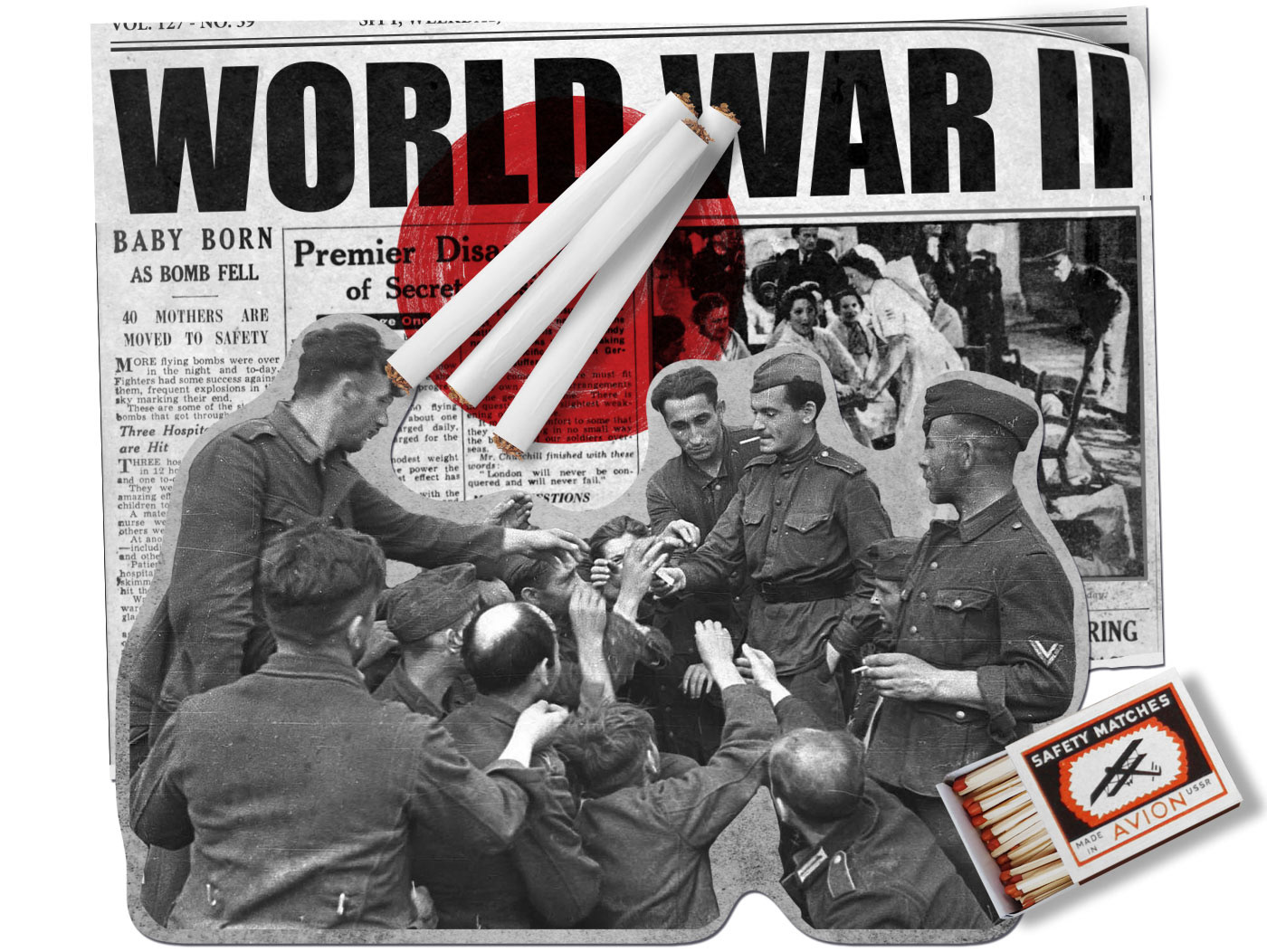
North-Eastern American tribes were historically smoking tobacco in pipe ceremonies, whether for sacred ceremonies or those to seal a treaty or agreement. Tobacco was only brought to Europe in the 16th century, and became widespread in the 17th century.

The use of tobacco in cigarette form became increasingly widespread during and after the Crimean War, when soldiers had begun rolling and smoking tobacco in powder paper by reason of lack of proper cigar-rolling leaf.

After the Crimean War, Philip Morris started producing handmade cigarettes in his tobacco shop. The first patented cigarette-making machine was invented by Juan Adorno of Mexico in 1847.

In 1881 James Albert Bonsack developed another cigarette-making machine, which increased the productivity from making about 40000 hand-rolled cigarettes daily to around 4 million.

At the beginning of the 20th century, tobacco companies turned their attention to women. The first "female" brand of cigarettes was the Lucky Strike brand, which forms an associative relationship between smoking and slimness.

In 1929 American Tobacco Co. was paying women to smoke “torches of freedom” as they walked in the Easter Sunday Parade in New York. This was a shock because until that time, women were only permitted to smoke in their own homes.

A number of successful advertising campaigns contributed to the continued growth of female smokers until 1965.

Tobacco companies sent free cigarettes to troops and supported the inclusion of cigarettes into the soldiers' rations. After the war, a huge number of regular customers acquired.

Tobacco company products are being placed in movies, encouraging celebrity use and endorsement, advertising in magazines, designing advertising campaigns to reflect Hollywood's glamour, and sponsoring entertainment events.

To reduce the demand for cigarettes, the tobacco industry offers modern analogues. Nicotine marketing costs are in the tens of billions a year. In the US alone, expenses exceeded $1 million per hour.
The tobacco industry has frequently claimed that ads are only about "brand preference", encouraging existing smokers to switch to and stick to their brand. However, ads cause people to become and stay addicted.







